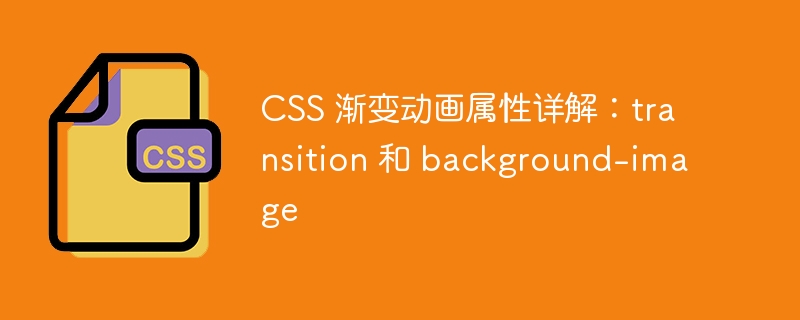

Detailed explanation of CSS gradient animation properties: transition and background-image
In web design, animation effects are one of the important means to improve user experience and increase page interactivity. . CSS provides a wealth of animation properties, including the gradient animation properties transition and background-image. This article will introduce the usage of these two properties in detail, with specific code examples.
1. Transition attribute
The transition attribute is used to define the transition effect of an element when changing CSS attributes. Smooth animation effects can be achieved by specifying start and end values, as well as transition time and transition effect functions.
Basic syntax:
transition: 属性名 过渡时间 过渡效果函数;
The commonly used transition effect functions are as follows:
The following is a specific code example that implements the gradient background effect of a button when the mouse passes over it:
<style>
.btn {
padding: 10px 20px;
background-color: #f00;
color: #fff;
transition: background-color 0.3s ease;
}
.btn:hover {
background-color: #00f;
}
</style>
<button class="btn">按钮</button>In the above code, a transition attribute is added to the button , set the background color change process to a slow in and out effect of 0.3 seconds. When the mouse is hovering over the button, the background color will fade from red to blue.
2. Background-image attribute
The background-image attribute is used to set the background image of the element. By combining the transition attribute, you can achieve a smooth transition effect between background images.
Basic syntax:
background-image: 图像1, 图像2, ...;
The specific code example is as follows, which implements a transition effect of image switching:
<style>
.image {
width: 200px;
height: 200px;
background-image: url(image1.jpg);
transition: background-image 0.3s linear;
}
.image:hover {
background-image: url(image2.jpg);
}
</style>
<div class="image"></div>In the above code, by adding a div element A background-image attribute and set two different images. Then use the transition attribute to set the image switching process to a linear transition effect of 0.3 seconds. When the mouse is hovered over the div element, the image will switch to the second image.
Summary:
The transition and background-image properties of CSS are important tools for achieving gradient animation effects. By flexibly using these attributes, you can add more interactive effects to web pages and improve user experience. I hope the introduction in this article will be helpful to you and inspire you to be creative in web design.
The above is the detailed content of Detailed explanation of CSS gradient animation properties: transition and background-image. For more information, please follow other related articles on the PHP Chinese website!




